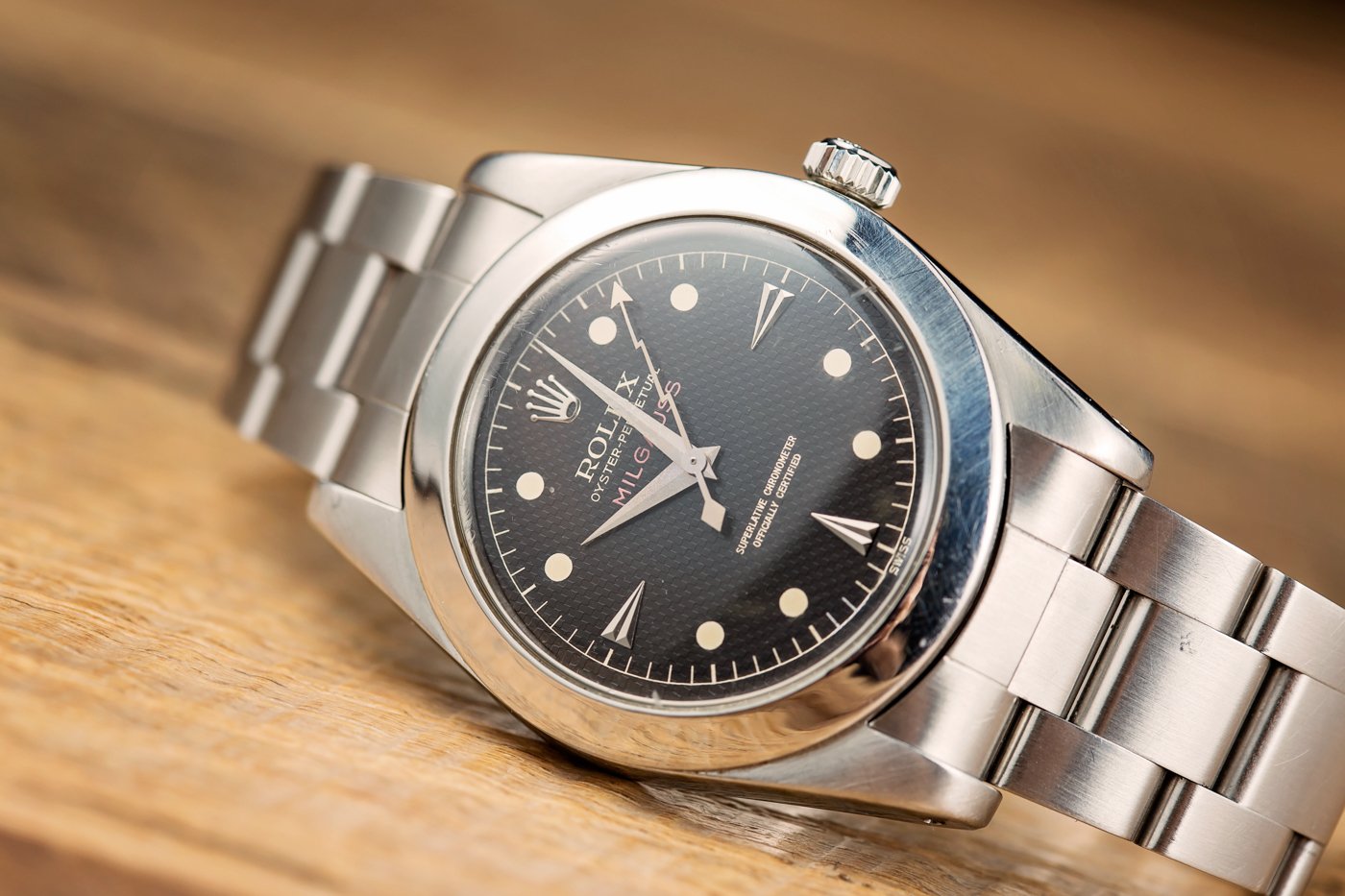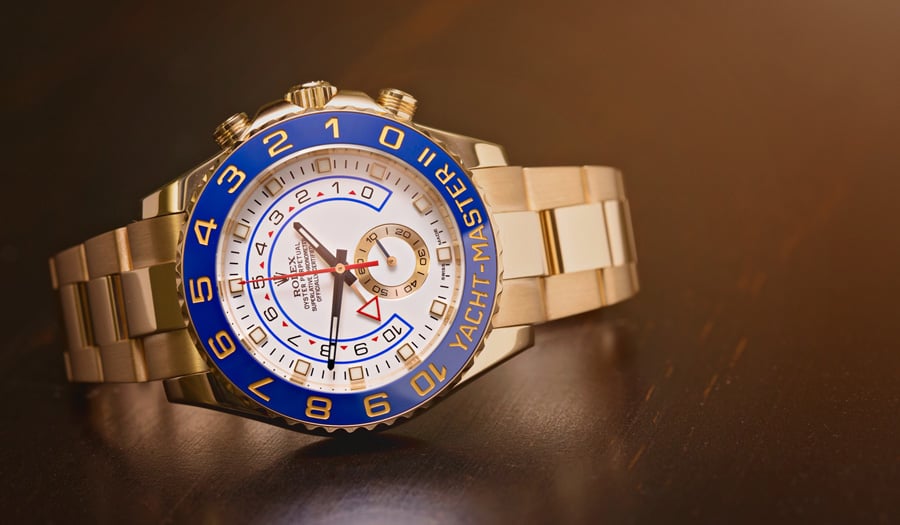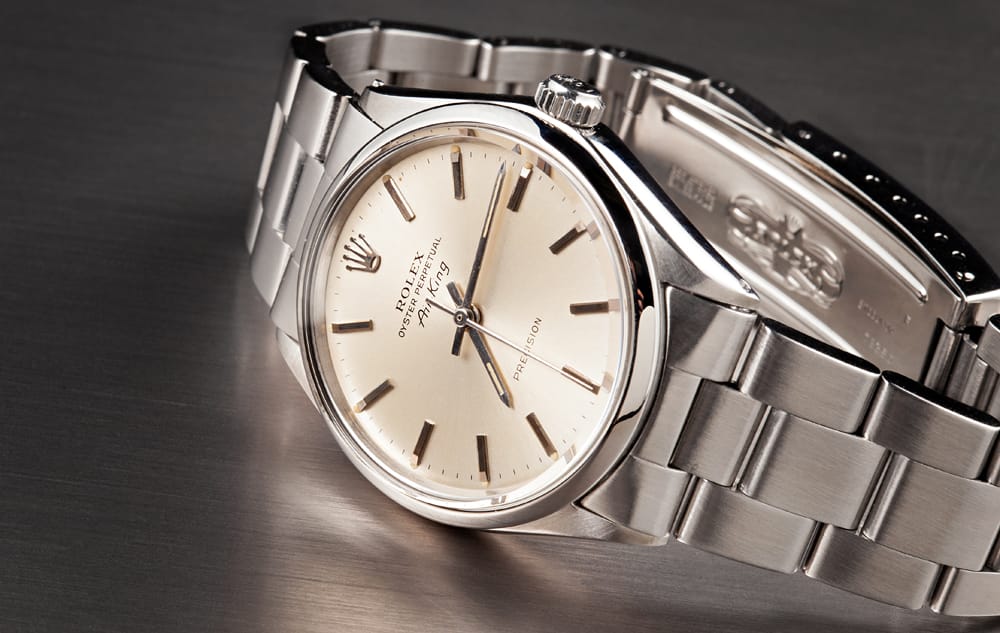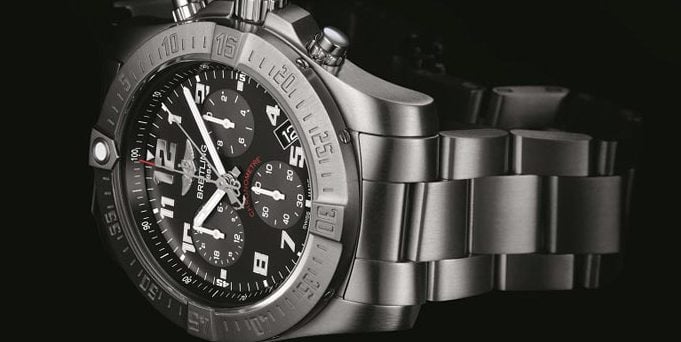The Milgauss has always been a bit of a black sheep among the Rolex lineup. While many of Rolex’s watch lines are designed specifically for some exciting sport or adventurous lifestyle, the Milgauss was originally introduced as a watch intended for scientists working in the proximity of powerful electronic machinery.

Not Popular At First
As electricity proliferated throughout modern industry during the 1950s, some individuals found that the electromagnetic fields emitted by the equipment around them caused irregularities in the timekeeping of their wristwatches. By encasing the movement inside a Faraday cage, Rolex was able to thoroughly protect its delicate workings from harmful magnetic forces acting upon it.
First released in the 1950s, the Rolex Milgauss was met with a mixed reaction from the public. Although highly impressive from a technological standpoint, most people in the late 1950s were more concerned with timekeeping ability and water resistance, which meant that the antimagnetic capabilities of the Milgauss were not a must-have feature for many prospective buyers.

Additionally, since both the Submariner and GMT-Master lines of watches were introduced just a few years prior – and since the first Milgauss, the reference 6541 also was fitted with a black, rotating bezel – many individuals who were in the market for a new, stainless steel Rolex sport had previously just purchased one.
Regardless of its lackluster initial sales, the Milgauss has remained an offering in the Rolex catalogue and is still in production today. To celebrate its 50th anniversary, Rolex released a special version of the Milgauss that, like many of Rolex’s other anniversary pieces, employs a bit of green-colored flair.
Into the Milgauss 116400
The reference 116400GV is 40 mm in diameter and is powered by Rolex’s caliber 3131 movement. Like other Milgauss references, the seconds hand is shaped like a lightning bolt, and the dial lacks any cutouts for a date or day display.
The most prominent feature of the reference 116400GV Milgauss is its green sapphire crystal. Completely unique to the Milgauss line is its use of colored synthetic sapphire glass. Although the crystal on the 50th anniversary edition reference 116400GV is green, the dial of the watch is black with orange and white text printed on it.

One of the most unique features about the 50th anniversary edition Milgauss is that the hour markers of its dial are finished with two different colors of luminous paint. While the majority of the markers receive white luminous paint that glows green, the markers at the 3, 6, and 9 locations are filled with an orange-colored luminous material that glows blue in low-light settings.
A Few Years Ago
For Baselworld 2014, Rolex released another version of the reference 116400GV Milgauss. This iteration also is fitted with a green sapphire crystal, however its dial is an electric blue color, and all the hour markers are filled with a uniform color of luminous paint. Other than the dial, the two watches are identical; however the 50th anniversary edition holds a special place in Rolex’s history, as it was their first watch to ever use colored sapphire glass for the crystal.
Although the Milgauss does not get as much attention as many of Rolex’s other watch lines, it is truly unique among their various offerings. With its brilliantly symmetrical dial, lightning bolt-shaped seconds hand, and striking green crystal, the reference 16400GV is one of the most unusual watches that Rolex has ever put forward. However, considering that the Milgauss has always been a bit of a black sheep in Rolex’s lineup, being “unusual” should actually be considered staying faithful to the legendary anti-magnetic watch’s history.








